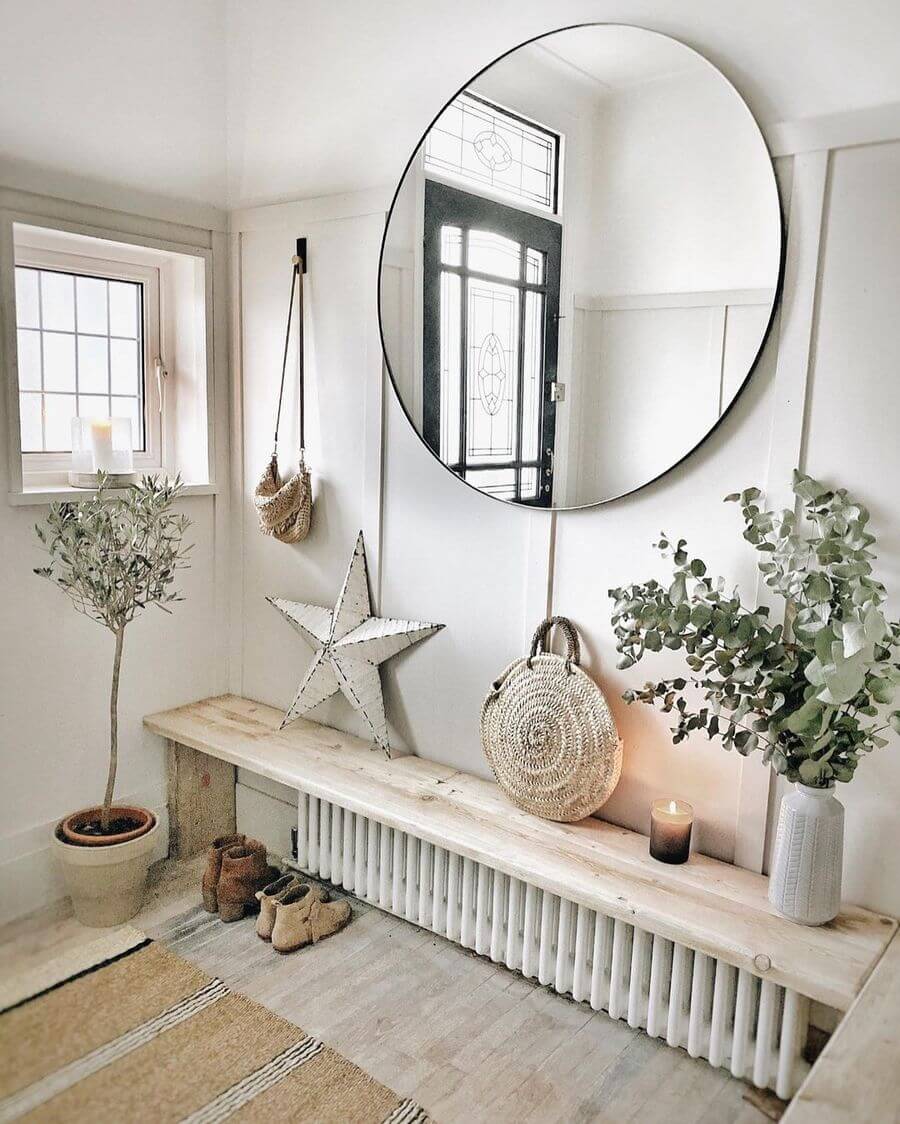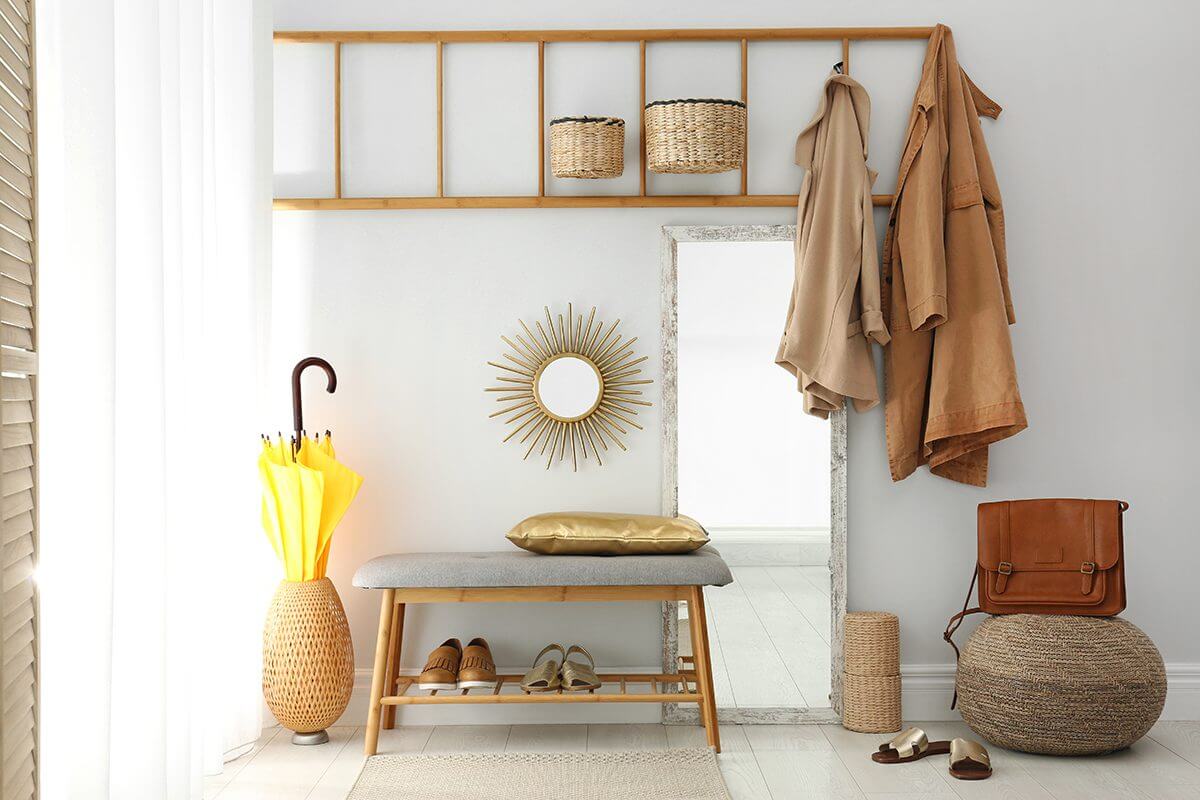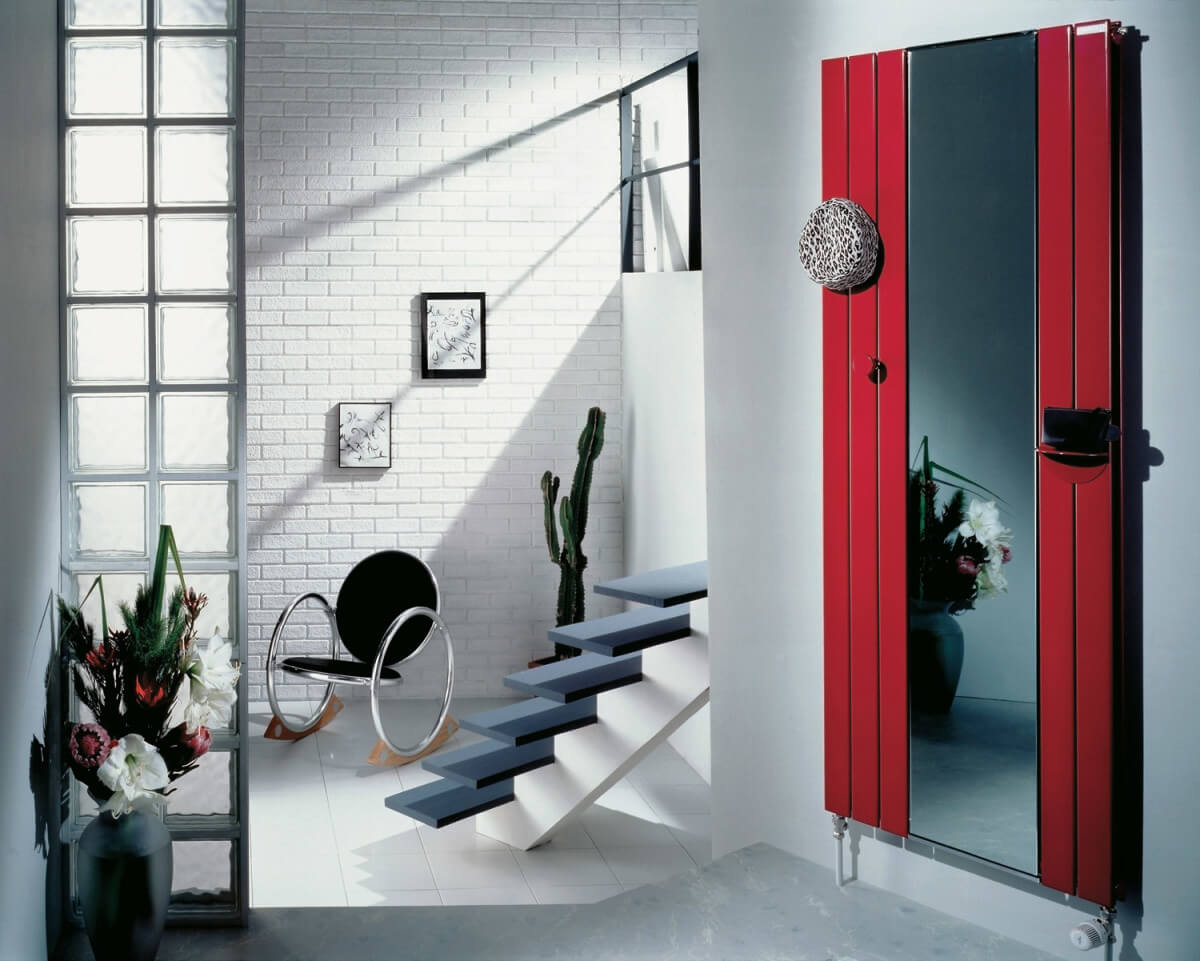From interior details to creative storage advice, these designed LED entryways, hallways and landings will inspire your remodel. Finding the perfect hallway in your home isn’t always easy, but it should be. From the first space any guest sees to the circulation areas between rooms, all entrances and hallways in your home require serious design attention. In addition to being often overlooked, they suffer from limited light and no natural focus, so you’ll need some solid interior tricks to transform them into clever spaces.
In addition to looking appealing, the entryway or hallway should set the tone for the rest of your home – the idea of placing a side porch should be considered to ensure it feels coordinated.
Hallway ideas
It’s all too easy to forget the hallway when decorating our home; after all, it’s not where we spend a lot of time. But there are many reasons why you work so hard – it’s the first thing family and friends see when they come, and it can make you feel relaxed and happy after a hard day. Whether you’re looking for fun, colorful or calm, soothing, here are some ideas to get you started.
1. Swap the rugs to smart runners
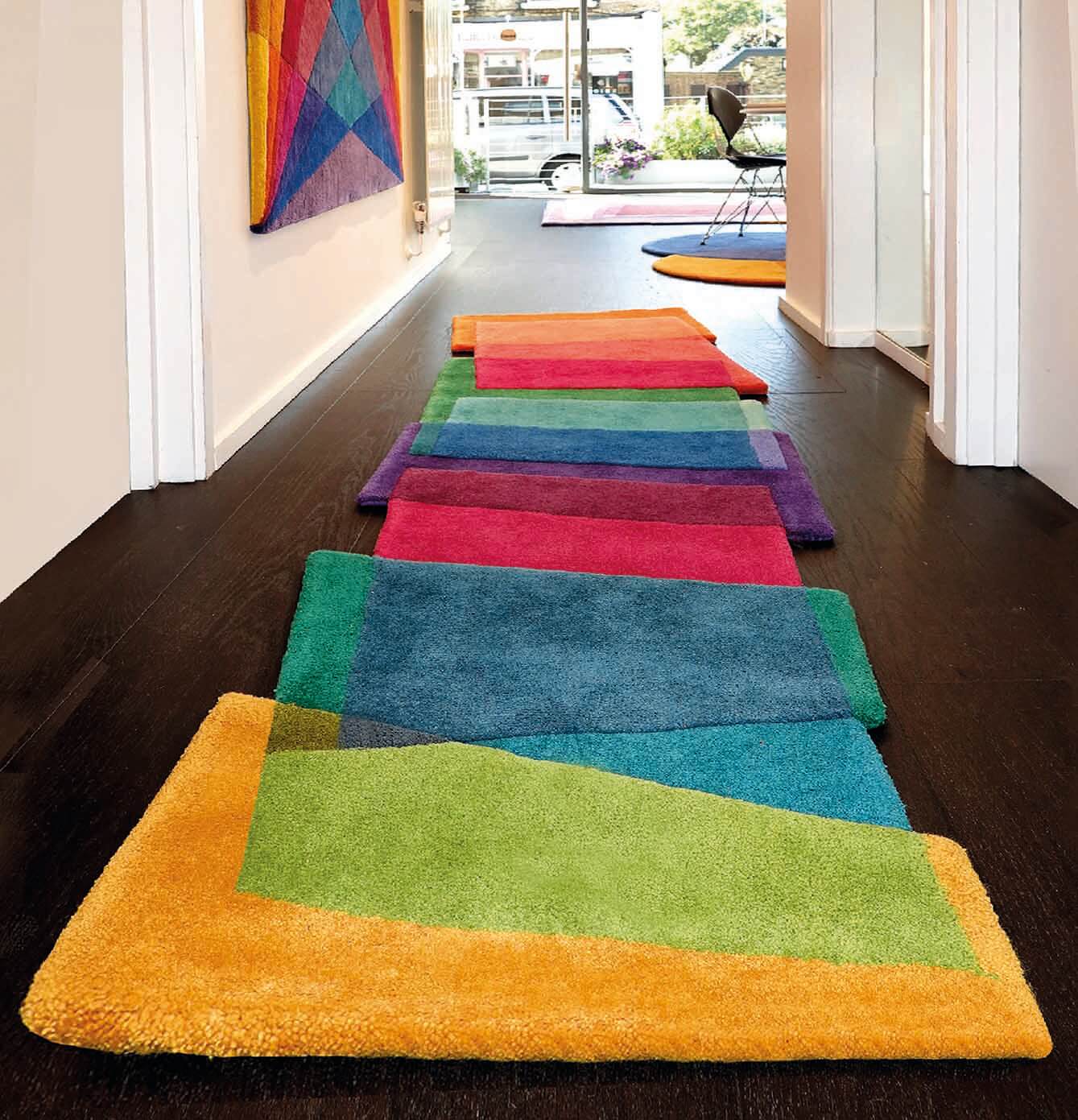 Long hallway looking towards the door
Long hallway looking towards the door
Carpets are not suitable for hallways or entrances, but stone or wood floors can feel unwelcome. The perfect compromise? A smart runner who can add color and pattern to guide the eye up and down the space, easy to occupy and cleaner is ideal.
Note the books and pictures in this space – it’s arranged like a room rather than an avenue, which makes it feel more welcoming.
2. Make low ceilings feel taller with white
 Hallway painted white
Hallway painted white
Entryways come in all shapes and sizes, and depending on the age of the property, can have low ceilings. In this case, white is usually preferred as it instantly adds brightness, but if you prefer a more subtle but still uplifting shade then consider Dips by Farrow & Ball, also used here.
It’s an elegant, refined gray that’s not as harsh as bright white. Be consistent and use it for walls and woodwork, so you get all-around wraparound.
3. Consider scale, light and color

Corridor with herringbone floor facing the living space
Remember that lighter colors will give more space, while darker shades will bring the room inside, creating a more comfortable, intimate feeling. Likewise, wallpaper with a large pattern will bring a dramatic feel, while a smaller design will help make the hallway appear more spacious.
Abrasion-resistant paint or hard, wipeable wall paint works best for particularly busy areas, said Claire Vallis, the company’s design director. “It’s more important in the family.”
4. Add some color for a quick fix

Hallway with popular colored coral benches
The foyer of this farmhouse is brightly colored with coral benches and multi-colored cushions.
“Your entryway is an introduction into your home and the amazing people inside,” said Mary Maloney, owner and designer of Bee Knee Interiors. “Your entryway should suit you. The architecture of the home, as well as the functional requirements. The church pews in this entry have sentimental value, as well as a bit of family history, all of which fit perfectly into this reproduction-style colony. Details matter, bright colors and fabrics add to the glamour, and all are welcome to enter!”
5. Add temporary storage to keep things tidy

Round mirror
It’s unavoidable, especially kids, will kick off their shoes at the entrance and leave them there. Brenna Morgan, designer Brenna Morgan Interiors have an easy solution: Baskets and Boxes:
“An entry space is great for grabbing things when you get home.” Here, we added two large baskets that easily fit shoes or children’s toys. She said there may be keys, masks or sunglasses in small boxes on the table for easy access on the go.
The mirror also enhances and illuminates the entryway – note its proximity to the light fixtures and table, creating a compact arrangement that is an attractive display in itself.
6. Choose paint with a soft sheen to reflect the light

Fresh flower arrangement with wallpaper
Note the paint finish on this entryway – it has a soft sheen, specially chosen to reflect light and create a smart finish on this spacious entryway. However, this trick works really well in smaller hallways or in people hungry for natural daylight, enhancing light levels and making the space feel larger.
“Don’t forget the entry wall. Sometimes, even after the furniture and artwork are laid out, the entry can feel incomplete, so you may need wallpaper or architectural paneling in the entryway, Stephanie Lindsey, lead interior designer of the Corrosion Design team “We provided 2D elevations for the design of the panels. A classic traditional element, the siding creates sophistication at the entrance to the house, but we painted it gray to modernize it. ”
7. Choose a minimalist wallpaper

Corridor with maximalist wallpaper looking towards the taking off room
If your hallway is big enough, embrace your favorite wallpaper. If you’re looking for inspirational hallway wallpaper ideas, the illustrated designs are eye-catching and create a fabulous welcome to your visitors. It can also frame the entrance to another room and look really spectacular, it pays to use the same color in this room so it looks cohesive, consider using the same floor so you can go from one space to another A space has a flow.
To spice up a long, narrow hallway, create a focal point at the end of the hallway with a set of feature wallpaper or a statement piece of art. Claire Vallis said: “This allows the eye to extend for the length of the room to the entire room, showing a sense of confidence.” In this scheme, we celebrate their resurgence by presenting rich, bold prints with a neutral, minimalist backdrop for an easy-to-live look.
8. Decorate with your favorite colors
 Corridor with turquoise walls and blue console
Corridor with turquoise walls and blue console
Add a little love color to this often overlooked space. Here, saturated shades of cobalt, malachite and patina are combined with botanical patterns to bring natural depth and earthiness to the interior. A low-hanging pendant is a great way to add emphasis to the furniture below.
“When introducing color, it’s best to avoid too many different shades; choosing one shade of wall and floor treatment can be very effective,” advises interior designer Tara Bernerd.
9. Blend your hallway with distant rooms

Corridor with green flower wallpaper and green bench
When designing a plan, consider the hallway an integral part of the home. Try to make sure the finish is in harmony to any room that leads to it, as well as the stairs, railings and landings (if visible), and that the paint color doesn’t conflict with the wallpaper.
10. Decorate with Tone Color Effects

The cabinets in the hallway are painted green and there are sisal strips in the doorway
Entrance halls don’t need to be dull, in fact, they can be the opposite. But that doesn’t mean they need to be filled with bright colors. We love the contrast between the dark Brunswick green of Little Green and the fresh approach of using Portland stone lamps (walls) and Portland stone, on Dado Rail, doors and trim. Green is enough to create a statement, but when balanced with neutrals, including terracotta ceramic tiles and buffalo, it works perfectly as a strong accent shade.
11. Decorate in warm tones for a homely feel
 Modern rustic corridor with yellow paint, central round table
Modern rustic corridor with yellow paint, central round table
The hallway needs to have a welcoming feel – not just for visitors, but also for when you come home. So, even a touch of sunlight can create an appealing ambience, especially if your space is poorly lit or north facing.
The focal point in the hallway is also always a triumph; here, the central circular table is meant to draw attention. But it can cause confusion, so be sure to provide storage options in or near such a table.
12. Go for a dazzling display of the woodwork
 Foyer with bright yellow woodwork and neutral patterned paper
Foyer with bright yellow woodwork and neutral patterned paper
For pure fun, match your pig’s feet to the color of your favorite wallpaper, and don’t be afraid to brighten up your fancy hallway like Green from Baby. Featuring a striking Loriini Dorian wallpaper, the rather traditional design – albeit in bright colors – contrasts with the ultra-modern shaded trumpet (196).
Granted, this isn’t for the faint of heart, but if your hallway is bright, it’s acceptable. Keep the rest of the scheme low profile and let the walls and paint do the talking.
13. Be low-key and choose to be more mature

Dark blue painted hallway and console table
If you like to paint your woodwork one color, but instead of bright yellow like above, you can opt for a dark blue that still creates a bold design feature for your hall, Robert Walsh, founder and Owner Ted Todd Fine Wood Floors explains:
“The hallway should be as pretty as any other room and should take you through the house.” To keep the hallway light and airy, choosing a lighter wood floor will not only bring out the beauty of the outdoors, but will keep the space feeling bright. Introducing a pattern like a chevron or chevron will help draw your eye through the space and make it feel larger.
What’s more, the lighter floors provide a contemporary feel and will add subtle instructions, allowing you to use bold colors elsewhere – why not choose dark blue, gray or green for doors, frames and other wood products to increase contrast and balance the space?”
14. Introduce subtle patterns
 Corridor with patterned runners running its length
Corridor with patterned runners running its length
Plain walls give you room to be creative, they act like a blank canvas on which you can put your own mark. If you like white, a single color, or are looking for cottage hallway ideas, then give your hallway a little extra interest with some pattern, runners are perfect for this and this is Tasha Green, Director Weaver Green explains:
“The runner allows you to instantly update and change the feel of the hallway. The statement runner can be the main design feature from which you can complement other interior elements in your entryway. For example, a simple herringbone pattern can be classic and timeless. You can add vibrant or strong patterns and prints to it, along with other accessories.”
15. Add a standout mode to the effect
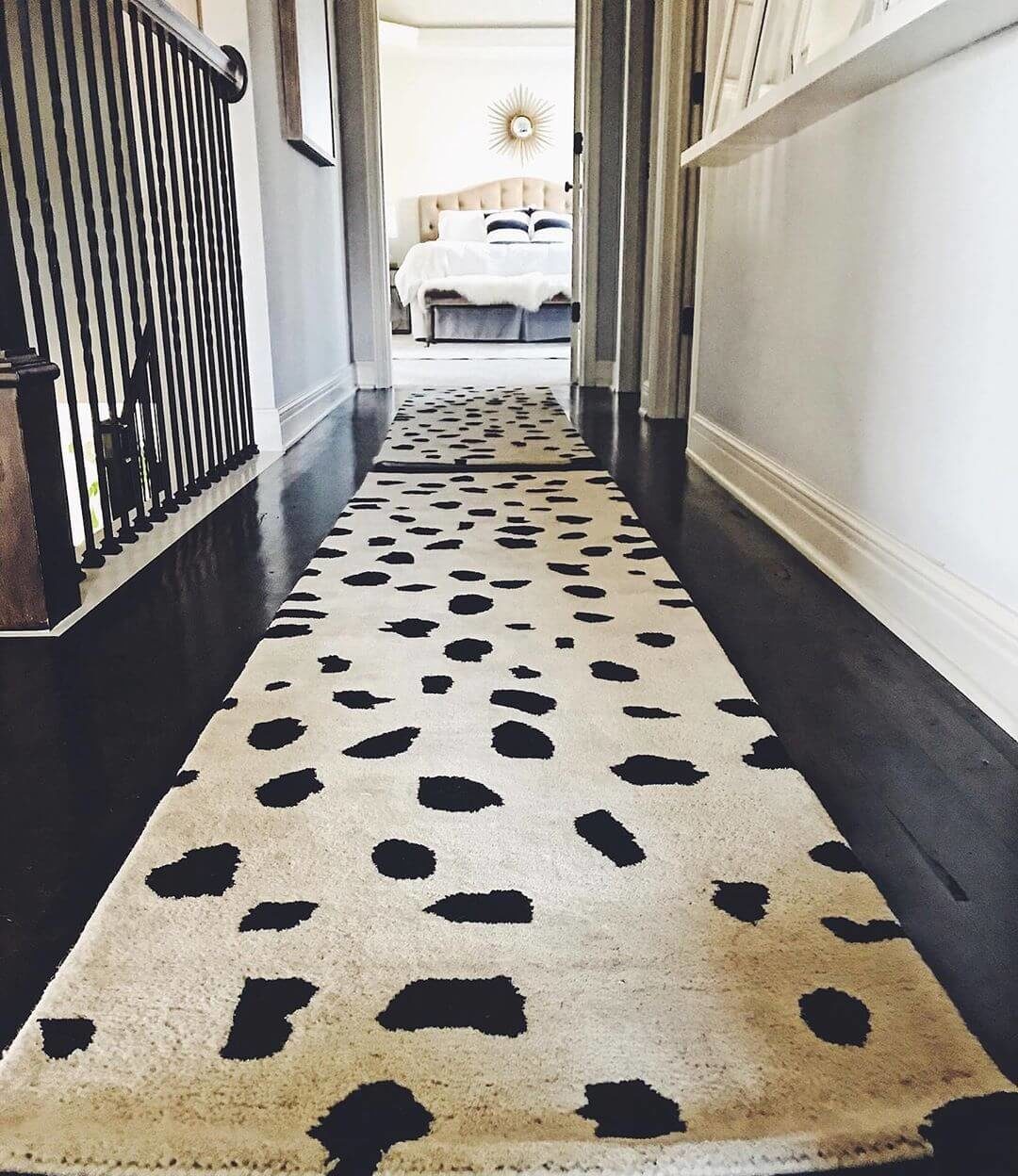 Hallway with leopard print rug
Hallway with leopard print rug
Carefully select stairs that reflect your personality. Places we walk through rather than live at home, like cloakrooms or hallways, can be the perfect opportunity for the more docile among us to try this trend. A printed rug against an understated décor can also have a pretty boho look, as shown here.
Everything else in the hallway is neutral, so when you walk into the room, the rug is the focal point. It’s an effective look, but it’s simple to implement because it doesn’t require elaborate embellishments elsewhere.
Notably, the stairs are painted white to allow the pattern to stand out compared to the dark wood floors.
16. Improve storage potential
 Hallway with lockers and tiled floors
Hallway with lockers and tiled floors
It’s the first place you and your visitors see when you arrive at your home, but it also attracts everyone’s “stuff” – buy a few keys to organize it and keep your daily essentials handy.
Most hallways are narrow, so put all storage space on one wall. A tall stud railing can be home to a variety of things and keep things surfaced. Or, if space allows, a row of built-in cabinets is also a neat and tidy option.
17. Use a runner to guide your eyes
 patterned hallway and console benches
patterned hallway and console benches
No matter the size of your entry hall, there is a way to make an impact.
In houses of that era, traditional hallways were often narrow, so beware of the tricks to the eye. Consider using a floor flow to direct the eye towards the vista, and try opening the interior doors to the lobby to increase the sense of space.
The lobby also offers the opportunity for the bold use of color, especially soft furniture that can be easily changed. Here, a striking runner and wall hangings provide energy without being overwhelming.
18. Use symmetry as a design feature

Hallway with console
“The hallway is the first part anyone will see when entering your home, so it’s important to make sure it’s a true reflection of your personality and style,” explains Emma Deterding, founder and CEO of the company. Designed by Creative Director Kyle.
“To maintain a bright feel, choose neutral tones on the walls, which keep the hall fresh, and use a large mirror to reflect light while giving the illusion of space.” A console table not only allows you to display personal items and Precious items, but also drop bags, keys and mail as you go in and out of the house.
Here, a pair of matching table lamps will help create symmetry and balance, and choosing bright colors and bold patterns for shades and upholstery will allow you to bring your personality into this space while serving the rest of your home Set the mood. ”
19. Create interest with objects
 Corridor with yellow wallpaper and baskets on the table
Corridor with yellow wallpaper and baskets on the table
Set the tone the moment you walk in with a strong symmetrical arrangement, like this set of woven African baskets displayed on a table in a French bistro.
The earthy colors of the baskets coordinate with the botanical print and frame of the amber walls; a magic chandelier completes the effect.
20. Create the Right Mood with Lighting
 Console across the hallway with carpet and stove
Console across the hallway with carpet and stove
It is crucial to plan a scheme with no or very little windows and hall lighting. Try to use ambient or background lighting; task lighting areas like tables; and accent lighting to pick out features like mirrors or doorways. This hall includes LED spotlights, a table lamp and fireplace.
21. Focus on antiques

Hallway with a round table in the middle
It’s a good idea to create a design statement if your entryway is on the larger side, so the space feels too high. A beautiful antique table will do the trick, and a round shape is always best, so you slide around it instead of getting stuck in corners. Use it to display fresh blooms and trinket sets.
The color you choose also matters, as Henriette von Stockhausen’s creative director at VSP says inside:
“I love Deception and Ball’s colors, which, along with the warm tones of the antiques and beautiful damask prints by Pierre Frey, make this room comfortable and welcoming.”
22. Make the most of architectural details
 Hallway with high vaulted ceiling
Hallway with high vaulted ceiling
When faced with interesting curves and beautiful details, it seems like a shame not to feature them. We love the way this hallway has been decorated with a deep ginger color on the inside to give it a cocoon-like feel. Dark wood floors contrast with the color scheme while creating continuity from the hallway to the living room.
23. Choose classic outfits that you never date
 Hallway with black console
Hallway with black console
A classic that never ends, a monochromatic scheme is bold and beautiful. Irene Gunter, founder of London-based design studio, Gunter & Co. The design choices for this corridor are as follows:
“In areas that tend to be dark, like narrow hallways, large mirrors on reflective floors and walls will bounce light back.” The classic black and white marble design is not only timeless, it also makes the hallway feel less long and narrow.
“A well-designed patterned floor is the best way to make a room look bigger, and a good patterned floor doesn’t show where each tile starts and ends, which creates a very uniform effect, Trick people’s eyes and make the space feel bigger.”
24. For dramatic effect, choose two dark colors
 Two-tone green hallway
Two-tone green hallway
If your hallway is large enough, you can get away with choosing a few shades of dark and vibrant. Olive green is currently rolling, and Farrow & Ball’s version, Bancha No.298, with the fresh white woodwork and its studio green painted on the stair’s paneling looks fabulous.
The neutral errands on the stairs create a stark contrast between the two tones, an intentional feature worth replicating.
25. Never underestimate the power of mirrors
 Large mirrors reflect light perfectly
Large mirrors reflect light perfectly
The bigger the mirror, the more light you can reflect, and it’s easy to prop up a design that’s standing on the floor against the wall. It will also be an impressive focal point.
“Mirrors are an amazing tool for interior designers to create captivating optical illusions,” said Lou Graham, co-founder of Graham & Green.
The illusion of more space, brighter than dark corners, bouncing from one side of the room to the other. They can even mimic doorways, like portals into other worlds. Corridors can stretch into endless avenues with elegant floor-length mirrors, and blue skies can cover window mirrors with windows.
26. What is the best color to paint a hallway?
Remember that lighter colors will give more space, while darker shades will bring the room inside, creating a more comfortable, intimate feeling. Likewise, wallpaper with a large theme will introduce a sense of drama, while a smaller design will help make the hallway appear more spacious.
Hall lighting is critical when there are no or few windows. As with most scenarios, the key is to layer the different sources. Try to use ambient or background lighting; task lighting areas such as poster tables; and accent lighting to pick out features such as mirrors or doorways.
27. How to make the hallway more interesting?
Whether it’s the first space your guests see or the route between rooms, hallways deserve serious design attention. The winning scheme focused on wall and floor treatment, mood and storage – whether concealed or stated, fit enough to ensure it didn’t become a glorified dump.
The hallway is usually the first area a visitor encounters in a home, so it should reflect your taste and personality. You can choose a gorgeous room or a minimalist one: nothing is off limits, as long as the scheme aligns with, not competes with, the other rooms in your home.
